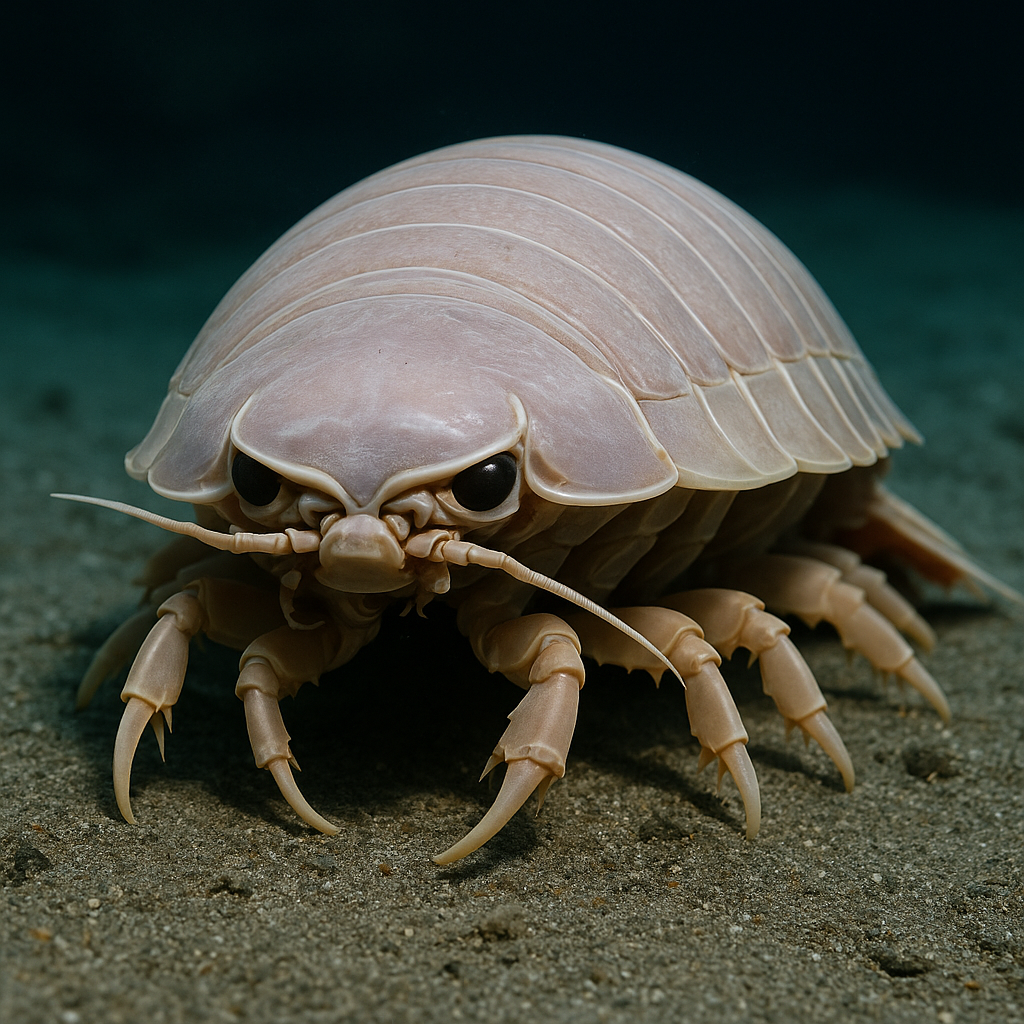Exploring the Fascinating World of the Giant Isopod: A Deep-Sea Wonder
The Giant Isopod, scientifically known as Bathynomus giganteus, is a truly remarkable creature that roams the depths of the ocean. With its intriguing appearance and impressive size, this crustacean has captured the imagination of marine biologists, deep-sea explorers, and nature enthusiasts alike. In this article, we’ll dive deep into the world of the Giant Isopod, uncovering its biology, habitat, diet, and the role it plays in the ecosystem.

What is the Giant Isopod?
The Giant Isopod is a species of large, deep-sea crustacean that belongs to the order Isopoda, which includes over 10,000 species of animals, such as pill bugs and woodlice. What sets the Giant Isopod apart from its terrestrial relatives is its sheer size—sometimes reaching lengths of up to 2.5 feet (76 cm). These fascinating creatures are often described as resembling giant pill bugs, but they are far from the tiny insects you might find in your backyard.
Habitat: Where Do Giant Isopods Live?
Giant Isopods are typically found in the deep waters of the Atlantic and Pacific Oceans, particularly in regions off the coast of Japan, New Zealand, and the Gulf of Mexico. They thrive at depths between 500 and 7,000 feet (150 to 2,100 meters) below the ocean’s surface, where sunlight is virtually nonexistent. These depths are part of what’s called the hadal zone, one of the most extreme environments on Earth.
Living in such an inhospitable environment, Giant Isopods have evolved to withstand the crushing pressure and cold temperatures of the deep sea. Their ability to survive in these extreme conditions is a testament to the resilience of life in the most remote corners of our planet.
Physical Characteristics: A Closer Look at the Giant Isopod
One of the most captivating features of the Giant Isopod is its size. While most isopods are tiny, the Giant Isopod can grow to an astonishing size, making it one of the largest members of its family. Here are a few key characteristics:
- Body Size: Giant Isopods can measure up to 2.5 feet (76 cm) in length, though most are smaller. Their large, segmented bodies resemble oversized pill bugs.
- Exoskeleton: Like all arthropods, the Giant Isopod has an exoskeleton that provides protection. This exoskeleton is tough and made of chitin, a substance that also makes up the shells of insects and crustaceans.
- Limbs: The Giant Isopod has 14 legs that help it scuttle across the ocean floor, and antennae for detecting food and navigating the dark ocean depths.
Diet and Feeding Habits
Giant Isopods are scavengers, feeding primarily on the remains of dead animals that sink to the ocean floor. This can include fish, squid, and even whales. They are opportunistic feeders, meaning they will take advantage of any food source that falls within their reach. Their ability to go without food for extended periods is remarkable. Some Giant Isopods have been known to fast for several months between meals.
Interestingly, they possess specialized adaptations that help them survive long periods without food. For instance, they have a slow metabolism, which allows them to store energy and survive in an environment where food is scarce.
Unique Adaptations for Survival in the Deep Sea
Living at extreme depths presents numerous challenges. To survive in the high-pressure, low-light, and cold environment of the deep ocean, the Giant Isopod has developed several unique adaptations:
- High-pressure Tolerance: Giant Isopods have a highly resilient body structure that allows them to withstand the immense pressure found at deep-sea levels.
- Low Metabolism: Their slow metabolism enables them to survive without food for long periods, making them well-suited for the feast-or-famine nature of the deep sea.
- Large Eyes: While the deep sea is dark, the Giant Isopod has large eyes that can help it detect bioluminescent prey or potential threats in its dim surroundings.
The Role of Giant Isopods in the Ecosystem
Giant Isopods play a crucial role in the ocean ecosystem. As scavengers, they help clean up the seafloor by feeding on dead animals, thus preventing the buildup of carcasses that could otherwise pollute the environment. This not only maintains the health of the ecosystem but also provides nutrients for other creatures that depend on the decomposition process.
Their presence is an essential part of the food chain in the deep sea, serving as a food source for larger predators like deep-sea fish, and possibly even certain species of sharks. While not much is known about their predators, it is believed that deep-diving fish and other marine creatures might hunt them.
Are Giant Isopods Endangered?
Currently, the Giant Isopod is not considered endangered. However, because they live in such specific and often vulnerable ecosystems, they could be at risk due to human activities such as deep-sea mining and pollution. As more research is conducted, conservationists are closely monitoring the health of deep-sea habitats to ensure that these unique creatures are not adversely affected.
Fun Facts About the Giant Isopod
- They can live without food for months: Giant Isopods are known to be able to go for several months without eating, which is rare for most animals.
- Their large size helps them survive: Their big bodies help them conserve energy in the deep sea’s nutrient-scarce environment.
- They’re a popular subject of deep-sea exploration: Thanks to their fascinating appearance, Giant Isopods have become a favorite subject for marine biologists and deep-sea photographers.
Conclusion
The Giant Isopod is one of the ocean’s most extraordinary and enigmatic creatures. With its ability to thrive in the extreme conditions of the deep sea, this oversized crustacean continues to captivate the imagination of people worldwide. Whether you’re a marine biologist or a nature lover, the Giant Isopod is a creature that reminds us of the wonders and mysteries of the deep sea, where life persists in ways we may never fully understand.








